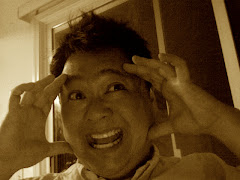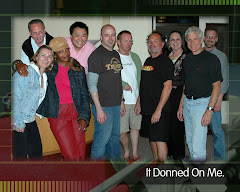I just reread the syllabus for this Digital Workflow class, and the last sentence of the above passage stuck out like a sore thumb for me. I learned quite a few lessons working on this second project. I really need to re-examine my workflow. I bit off way more than I could chew by attempting to film and edit in HD. To make a really long story short, I filmed in HD and captured the footage in iMovie because Final Cut Pro wouldn't recognize Rick and Sig's HD cameras. iMove down converted my file to SD and letter boxed the file, which took many many hours. Once this arduous task completed, I imported the compressed file back into Final Cut Pro and had to resize it because iMovie shrunk it to a size so small that I had to squint, even with my contact lens on. As a result of all this, my film turned out completely pixelated, stretched, and pretty much F@$*-ed up! Bottom line: my workflow was way off. I saw the red flags early on, but I dug myself deeper into the hole. Oh well.
I realized how much my lack of knowledge and experience of HD came to life when my film was shown on the big screen. I keep my FCP timeline and canvas fairly small, so I really couldn't tell exactly how out whack the file was! Of course, Professor Donn was very diplomatic in his critique of my work, and I do take all his constructive feedback into perspective. The technical side of things will take some time for me to absorb, as the left side of my brain is not as sharp as the eastern hemisphere of my rather large cranium. I'm going to have to pick up an HD For Dummies book as a reference guide, and continue to film in this format even if it means making more mistakes that will, no doubt, cause me more migraines. That's fine. I'll do what I have to do to get myself out of this standard definition mode and into the wonderful world of HD!
In addition to my technical work flow issues, Professor Donn also provided valuable feedback on composition. He pointed out areas that could use improvement, which I definitely agree with. I plan to re-edit this project, and these are the things I will be concentrating on:
- Using color correction to match up the different camera angles.
- Cutting down the film to the three minute requirement. I have a chronic problem with going over the time limit, so this is always a challenge. However, Professor Donn pointed out certain scenes that I could cut out. I didn't think about it at the time, but I realized that those particular scenes were not necessary to the plot.
- Figuring out how to really work camera angles for the next project.


















No comments:
Post a Comment